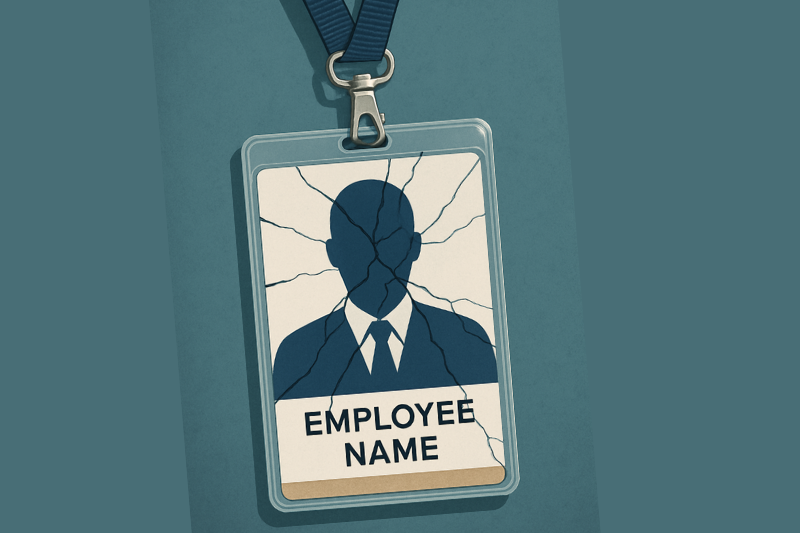Some degree of risk of the unexpected can happen at or on the way to any workplace. There’s societal tension, job insecurity and, in some vocations, a degree of unpredictable work environment every day.
Regardless of the sector or function, a growing risk of exposure to situations challenges employees’ core values and ethical standards. When they experience such violations or conflicts, they may suffer moral injury (MI). Understanding MI, how it occurs, and implementing strategies to support affected employees is beneficial for HR professionals and leaders committed to creating psychologically safe environments.
Experiencing an MI is a crisis that can have short- or long-term consequences, depending on the situation and support for early intervention.
What is a moral injury?
Moral injury is psychological distress resulting from actions or the lack of action violating an individual’s moral or ethical beliefs. Some serious MIs can result in post-traumatic embitterment disorder, a mental health condition described by prolonged feelings of bitterness and resentment following a negative life experience defined by the person witnessing it as unjust, immoral, insulting or humiliating. Though not found in the DSM-5, evidence suggests it can significantly negatively impact an individual’s functioning.
Unlike traditional mental health conditions like depression or anxiety, MI is rooted in a moral or ethical violation that leaves a profound sense of guilt, shame or betrayal. It was initially described in military contexts when soldiers engaged in or observed acts conflicting with their deeply held moral values. Today, it is increasingly recognized in civilian workplaces across industries.
When I started working as a lifeguard many years ago, before psychological health and safety, trauma-informed workplaces, PTSI supports and MIs were on the radar, I observed three children being dropped off daily at the park with no parental supervision, water, food or support. My teenage colleagues and I often worked with the playground staff to get these children into the shade, provide water, and share our lunches. We did not know any better, but I recall talking to my parents and losing sleep because, being adopted, I knew what feeling unsafe was, and it bothered me that those children were not protected.
First responders, health care workers, mental health professionals, teachers, military personnel, corrections officers, child protection workers and public sector employees are among those who may be more at risk of exposure to situations that can trigger a low- to high-grade MI. One study suggested the prevalence of clinically relevant MI in healthcare professionals was 45 per cent. Situations like these come without warning, and their frequency, duration and intensity can accumulate and increase the risk of experiencing an MI.
How do moral injuries happen?
Witnessing unethical behaviour: Employees may observe colleagues engaging in dishonest practices, harassment or other unethical conduct.
Being coerced into compromising standards: Managers or leaders may pressure employees to bypass procedures or deliver results through questionable means.
Failing to act: Employees may feel powerless or caught between conflicting responsibilities, leading to feelings of betrayal or abandonment.
Organizational changes: Downsizing, layoffs or restructuring can make employees feel betrayed by leadership or their moral compass if they perceive unfair treatment.
Observing immoral acts: Witnessing something shocking and upsetting to one’s moral compass. For example, on the way to helping a parent in need of medical attention or other help, you notice their child is in distress with no intention of care, triggering a breach of the standard of care a parent should exhibit.
These situations can generate feelings of moral dissonance and trigger powerful emotional reactions because of the disconnect between what is observed and the observer’s moral compass. The severity or frequency of an ethical breach can be damaging and result in a psychological injury that can impair functionality, motivation and the ability to stay or return to a workplace.
Moral injury as a personal crisis impacting perception
Moral injury is more than a transient discomfort a person can shake off. An MI can result in a personal crisis that deeply affects an employee’s perception, attitude and worldview. They may feel betrayed, ashamed or isolated, eroding trust in leadership, colleagues and the organization. When experiencing an MI, it is common to be confused, have more questions than answers, struggle with negative thoughts and be unsure what to do other than avoid people, places and things.
This crisis of perception can diminish an employee’s sense of purpose and meaning in their work, leading them to question their values and role within the organization. Such cognitive dissonance hampers motivation and engagement and often results in withdrawal from work, taking time off or resignation.
Impact on employees’ mental health
Depression and anxiety: Persistent feelings of guilt or shame can lead to clinical depression and anxiety disorders.
Addictive disorders: Employees may engage in at-risk behaviours (e.g., drugs, gaming, gambling, etc.) to assist with self-soothing or managing negative emotions and thoughts.
Post-traumatic stress injury (PTSI): Particularly in high-stress and ethically charged environments such as first responders, an MI can resemble a PTSI, characterized by intrusive thoughts, emotional numbness or hyperarousal.
Reduced resilience and increased vulnerability: Ongoing internal conflict can diminish self-confidence and resilience, making employees more susceptible to stress-related issues such as burnout, substance abuse and other mental health issues that may trigger self-harm behaviours.
Moral injury often remains unrecognized because it’s not classified as a traditional mental health diagnosis but carries profound implications for well-being. MIs are not discussed enough in onboarding and prevention regarding processing moral breaches and ethical violations experienced in or out of the workplace that can impact employees’ capacity to work.
Examples of the consequences of moral injury in the workplace
Decreased performance: Grappling with moral distress distracts employees, reduces focus and hampers productivity.
Higher turnover rates: Employees experiencing moral injury are more likely to disengage or leave the organization, increasing recruitment and training costs.
Damaged team dynamics: Feelings of betrayal or moral dissonance can fracture trust, impair communication and undermine collaboration.
Organizational risks: Ethical lapses or malpractices resulting from an unresolved MI can lead to legal issues, reputational damage and diminished stakeholder confidence.
Absenteeism: Affected employees are at increased risk of missing work, being late or going on disability.
Recognizing these impacts emphasizes the value and benefit of employers being mindful of MI, providing support and intervening. Some sectors are more at risk of MI. Today’s risk of food insecurity and observing people living on the street can result in employees seeing things on the way to work or in the workplace that can have a profound negative impact on their mental health.
Cultivating a supportive organizational culture
Support is most effective when embedded in an organization’s culture. By increasing empathy and awareness of MI-like trauma, informed workplaces can create conditions where it is OK to seek support in times of moral distress.
- Promote openness of ethical concerns without fear of retribution.
- Encourage ethical reflection and dialogue at all levels.
- Recognize and reward ethical behaviour and accountability.
- Integrate mental health and ethical support into wellness programs.
Prevention and mitigation strategies
Preventing and mitigating moral injury requires intention, discussion and an approach aligned with the workforce’s risk profile. General education of MIs for employees within mental health awareness training can reduce stigma and trigger help-seeking behaviour and early intervention.
Education and awareness: General awareness training sessions can help employees recognize signs of moral distress and understand the importance of ethical standards. Leaders should model ethical behaviour and openly discuss moral dilemmas.
Job readiness and ethical decision-making training: Equipping employees with decision-making frameworks and ethical tools enhances confidence and resilience when facing challenging situations.
Clear organizational values and policies: Establishing and reinforcing a code of ethics fosters a shared understanding of organizational standards, reducing the likelihood of morally compromising situations.
Open communication channels: Creating safe spaces where employees can voice concerns without fear of retaliation promotes early identification of moral distress.
Supports for dealing with moral injury
Be mindful of subclinical and clinical boundaries when considering support for an MI. An MI may heal on its own, like a bruise to the arm, meaning the person could benefit from support and can function at work but is bothered by an experience. However, when an employee’s functioning becomes challenged, they should visit a trained mental health professional to assess their risk and get them on a plan to mitigate it.
Peer-to-peer support: Implementing a peer-to-peer support program where peers are trained can provide resources for employees experiencing a moral dilemma. This may involve helping them process their feelings or recommending they see a mental health professional if the MI is negatively impacting their functioning and behavioural choices.
Group coaching program: This can be a subclinical forum to help those experiencing low-grade MI heal. However, it must be done with caution and clear boundaries.
Counselling and mental health services: Providing access to confidential counselling sessions with mental health professionals trained in trauma and ethical distress helps employees process their experiences.
Training: Leaders in high-risk sectors, like first responders, benefit from being equipped to recognize signs of moral injury and trained to respond empathetically. Regular training can enhance their ability to provide support, foster ethical dialogue and create a culture of trust.
Restorative practices: When feasible, organizations can implement restorative justice initiatives that help employees address moral conflicts, seek reconciliation, and rebuild team trust.
Proactive follow-up: Regular check-ins and follow-up support show employees the organization cares and is committed to their holistic health, enhancing recovery and retention.
Supporting employees in coping with moral injuries is critical to sustaining a healthy, productive and ethical workplace. Recognizing the signs of moral distress, understanding its roots and impacts, and implementing supportive policies and programs are essential for HR professionals and organizational leaders.
Organizations can help employees navigate moral dilemmas, recover psychological resilience and maintain engagement and loyalty by fostering a culture of transparency, crisis readiness, ethical integrity and compassion. Confronting moral injury head-on can help employees and support organizational sustainability.






